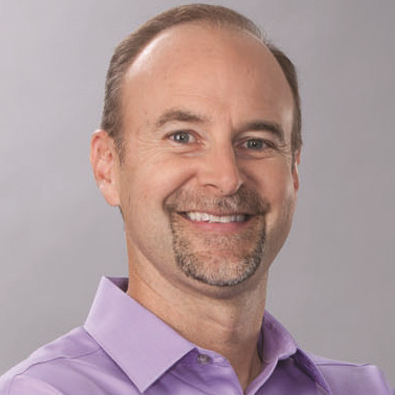What Does The Future Hold For Marketers? 16 CMOs Share Their Predictions For 2015
- Fahad H

- Dec 18, 2014
- 10 min read
What’s in store for marketers next year? To help prepare for 2015, we asked sixteen of today’s leading CMOs their predictions for the new year.
From Taco Bell CMO Chris Brandt who forecasts mobile’s ever expanding role in the consumer experience, to Salesforce Marketing Insight VP Jeff Rohrs’ prediction that 2015 will be the year of collaboration, marketers have much to look forward to during the next 12 months.
In the age of ubiquitous connectivity, mobility, and social media, CMOs and their C-Suite brethren can no longer afford to remain siloed in organizational towers.
While everyone would like a crystal ball to forecast the future, the following CMO insights very well may be the next best thing.
Top CMO Predictions for 2015

Chris Brandt, CMO, Taco Bell Corp.
In 2015, I believe that mobile will continue to elevate the consumer retail experience and will put more control in the hands of consumers—they will have access to brands, services and products where, when, and how they want it.
However, mobile ordering and payment plans are just the beginning.
Smart marketers will leverage access to new levels of consumer information and provide ‘mass personalization’ of offerings to woo consumers and drive growth. This will lead to unprecedented levels of consumer engagement and affinity for the brands that most effectively utilize new data and technologies.

Michelle Denogean, CMO, Edmunds.com
In 2015, I expect marketing endeavors to show strong focus in two specific areas – mobile and big data. We’ll see brands continue innovating their mobile experiences for customers on the go, from optimized mobile web experiences to disruptive standalone apps. In addition, with the emergence of Apple Pay, Google Wallet and other mobile checkout solutions, the path to purchase is getting easier and easier on mobile devices, which has been one of the biggest pain points for mobile customers.
As consumers embrace the ease of use for mobile commerce, we’ll see marketers implement more robust mobile strategies in 2015.
Even for offline transactions, efficiencies will be developed to streamline the process for both shoppers and retailers. We are already seeing some interesting use cases with Apple Passbook.
With a continued emphasis on big data, I predict the expansion of data gathering from connected devices such as Apple’s Beacon, and in the sophistication of marketer’s data analysis, which has solidified its place as the foundation for product development.
However, both these shifts will require innovation, skill and the thoughtful application of user data, but it will be well worth the effort as it will generate more loyalty for the brands that do it well. Especially as mobile continues its explosive growth across multiple industries, marketers will need an increasingly vigilant eye on meeting their customer needs in this unique space.

Jeff Rohrs, VP Marketing Insights, Salesforce
2015 will be the year of collaboration. In the age of ubiquitous connectivity, mobility, and social media, CMOs and their C-Suite brethren can no longer afford to remain siloed in organizational towers. They must reach across the aisle in order to best serve consumers no matter the device, channel or location their journey takes them.
This means marketing, sales, and service will have to become more interconnected than ever – both generating and sharing common data about each customer that boosts sales, brand loyalty, and customer satisfaction with every touch.
Technology will be a critical component in this effort, but so too will employee education. Front-line employees must understand that they act not in a vacuum, but rather an ecosystem. And often, it is their final, human touch that converts the power of big data, predictive analytics, and consumer insights into tangible results that transform average customers into rabid brand advocates.
Yes, 2015 is the year to encourage your teams to reach across the aisle and collaborate more than ever with their colleagues in sales, marketing, and service. After all, when your customers look at you, they don’t see silos; they see one brand committed to serve them. May the New Year enable all of us to deliver better on that vision.

Dan Robbins, VP Corporate Marketing, FOX
When used as part of an integrated brand story strategy, “free” social platforms – whichever works best for your business – can be powerful tools. The problem is that they are all-too-often thought of as a silver bullet marketing strategy, and we all know that there’s no such thing as a free lunch.
For example, Facebook now only lets you organically reach single-digit percentages of your audience, throttling posts that are deemed too sales-driven. In this new social order, boosting a single post to reach your full brand following can cost as much as or more than a full-page print ad. Whether that’s a good move is dependent on your number of likes as well as the types of magazines your brand advertises in.
How many brands spend big money (not to mention time and resources) to acquire Facebook likes, only to be denied access to them? Those brands that choose to grow a social following other than purely organically don’t get it anyway, but it further hammers home the point: Don’t throw away valuable marketing resources on a platform you don’t control.
Now that Facebook’s monetization plans are out of the bag and knowing it’s likely that other social platforms will follow suit, my prediction is this: In 2015, I predict that brands will divert budget away from social platforms and will funnel those dollars toward enhancing owned digital platforms like their website(s), e-mail marketing lists, and mobile apps.

Allan Jones, CMO, ZipRecruiter.com
Great brands are built through a combination of marketing channel influences. Each channel has a different purpose. TV for brand building, digital channels for users in need of your product now, mobile for more real-time access and social to help support your brand and re-emphasize your products value.
In 2015, zeroing in on the right combination of channels to achieve your marketing goals will be the secret to success.

Dee Anna McPherson, VP of Marketing, HootSuite
2015 will be all about the customer experience and closing the digital loyalty loop.
The customer will be at the center of every decision made by the CMO, whether focused on customer service or finding new ways to move customers through the marketing funnel. Simultaneously, social media is changing how organizations manage relationships throughout the customer experience.
Customers now reach out for service over multiple social networks and expect assistance within hours, if not minutes. This changes the way marketers need to react, and means that experiences need to be seamless no matter where the customer is engaging.
Meanwhile, social media as a medium continues to evolve as sites like Facebook and Snapchat explore new revenue streams. The game is shifting from using social to drive awareness over to using social to fuel the “Loyalty Loop.” The industry is taking an interesting turn as it now requires marketers to consider the influence of social media in commerce.
Essentially, we can expect to see the digital loyalty loop to replace the traditional marketing funnel just as understanding and influencing each stage of the customer journey will be top priority for every CMO in 2015.

Joe Saracino, Chief Client Officer, Erwin Penland Advertising
In 2015, we will finally see brands and agencies crack the ROI-code on content marketing.
There is too much of an investment shift happening, with dollars pouring into content, to allow the lack of measurement or lack of measurement standardization to continue. Engagement and consumption metrics are good – we like knowing how many people viewed our content or shared our content, but the focus needs to shift to lead generation and sales conversion metrics.
What is the impact on the overall business? Once we nail the true measurement formula, we can start asking the bigger questions.Can content marketing save a brand money? Is it a more efficient lead-generation tool? Can it offset human capital costs?
We in the agency world must lead the charge so that we can produce real case studies that show real benefit for brands.

David Pemsel, Deputy CEO, Guardian News & Media
Clearly consumers will continue to meet and interact with brands more often on mobile, something we see more and more every day as a publisher.
Consumers in 2015 will be actively and quickly looking for content that fits their screen and will return to the destinations that can deliver engaging content on their device while eschewing unresponsive destinations in parallel.
Similarly, brands will need to follow suit and deliver content that adapts for maximum engagement on all devices and formats.

Penny Holt, CMO, Borrowers First
Winston Churchill famously said, “Give us the tools and we shall finish the job.” For today’s marketers, there is a growing inventory of technology tools to help them do the job better than ever before.
Automated marketing platforms enable the seamless creation, management and tracking of marketing activity across channels. They support speed, personalization, and the smart, holistic marketing that is taking shape supported by digital agencies.
The role of marketing technologists will grow in 2015 and beyond. These are marketers who are expert at integrating and operating marketing technology and acting as a liaison between IT and marketing. They will become increasingly critical to help pay off the investment in marketing technology that is revolutionizing the space.

Stephen Murray, SVP of Marketing & Brand Integration, Here Media
The ever-growing trend towards programmatic buying will continue, but marketers will recognize that high quality, engaging content is best for building brands.
The battle cry to end bot traffic will continue, resulting in a massive push for clean traffic and ‘real’ users. There will be a resulting shift in focus from massive reach to high engagement.
Content providers and publishers will renew their focus on user experience – and not just on one platform but across channels. This will require rigorous optimization adapted for each channel.
As Google continues to make more and more content visible on search pages, content providers will have to find new, inventive ways to have their brand seen and recognized by users beyond the current channels (search, social, paid advertising, etc..)

Ted Hong, CMO, Dropoff
In 2015 I believe we will see a substantial increase in the use of social for B2B marketing.
We know many business executives spend time on social, in particular on Facebook, like many others do, but to date it’s been difficult to target them.
However, with advances in social advertising platforms, especially in areas like custom targeting and building look alike audiences, I think you will see a spike in use – both web and mobile.

Rose Hamilton, EVP & CMO, Pet360
As companies continued to invest in technology and digital experiences in 2014, we saw improved efficiencies, expanded online/digital footprints, and an increased focus on channel-level customer experiences. However, few brands are leveraging data and consumer insights to create new “digital” revenue and businesses.
2015 will mark the year that brands move beyond a channel-level view of customer engagement and begin to identify new businesses that provide value to their customers, increase multi-touchpoint engagement, and create brand differentiation by leveraging consumer behavior and data.
This will require brands to shift their culture to embrace a “digital first” approach to the customer journey that fosters increased collaboration and innovation across functions. The change will catapult brands from delivering “E-businesses” to truly designing “Digital Businesses.

Mike Volpe, CMO, HubSpot
The relationship between marketing and sales has always been a work in progress for most companies, at best. I think marketing decision makers will be more proactive over the next year when it comes to creating an open dialogue between marketing and sales.
Buyers have increased power and control over their purchasing process, and the changes that marketers have implemented to adapt to that shift are now coming to sales as well. I see a lot of new technologies emerging for sales reps, and increasingly there is a need for marketing and sales to share the same platform to enable better alignment with today’s buyer.
Smarketing is more of a buzzword than a practice for most businesses today, but I think we’ll start to see a shift toward better alignment when it comes to setting goals, diagnosing problems, and keeping lines of communication open.
The tools, technology, and data now exist these teams to seamlessly work hand-in-hand and I’m expecting to see more and more marketers taking advantage of that.

Jill Richards, CMO, Stitch Labs
In 2015, technology will transform retailing and consumer marketing for the better. A new cadre of SaaS operational technologies designed to enable multichannel commerce will give a big boost to retailers, especially ones who haven’t previously had great software choices.
Inventory management, POS and shipping software will manage basic commerce operations that previously took lots of people or time. Enhanced reporting and forecasting will start to be available in these products. The data and insights they generate will tell retailers where to sell more of a product, what products pair well together or what a company’s best customers buy.
All of this will free up resources for businesses and make it possible for them to successfully experiment with new marketing technologies like in-store opt-in marketing via iBeacon. Tech that drives personalized experiences using data from a combination of web visits, store visits, e-receipts, offer preferences, etc. will make marketing suck less for consumers.
Together, the data and real-time technologies will provide a mutual benefit to sellers and shoppers by increasing the relevancy of recommendations and promotions.

Eric Bader, CMO, RadiumOne
Mobile in-car will be the first of the “Internet of Things” advertising types to be commercially viable. Brand integration into maps, interstitial ad units and audio ads synchronized to other digital and mobile channels will be the first to emerge in tests and long-term sponsorships.
Native advertising will grow in social networks and mobile. We will see an expansion of brand advertising through native units in a space dominated by DR and conversion-seekers; but, the real growth will be in standard units that are simpler to valuate and buy. Custom native will continue to grow, but will be more niche due to greater expense and production time.
We will see a huge expansion of mobile video advertising. Video consumption of all types, including traditional TV content is going to happen on devices. eMarketer is predicting that more than 77% of all tablet users will watch video programming on their devices at least monthly.
Programmatic buying of video ad inventory will grow in step as it will give advertisers the most efficient access to these growing audiences of video consumers based on their behaviors rather than just their demographic profiles.

Paige O’Neill, CMO, SDL
In 2015, ever increasing consumer expectations will only continue to climb. In order to not only meet but exceed these expectations, CMOs and CTOs will need to work more closely together than ever to make sure digital brand experiences are seamless, as consumers will expect more and more consistency across all channels in the coming year.
Most shoppers are already willing to pay more for a better customer experience and retailers will need to make consistency a priority in order to remain competitive. With this consumer demand for quality customer experience at an all-time high, businesses will also need to shift their focus away from collecting mass amounts of big data.
Instead, the small data that reveals information, interests and patterns about individual customers will become the most critical resource for marketers.
In order to deliver the experiences that consumers now demand, businesses will need to process and understand the needs and habits of each individual customer and deliver experiences that are contextually relevant and personalized accordingly.








Comments